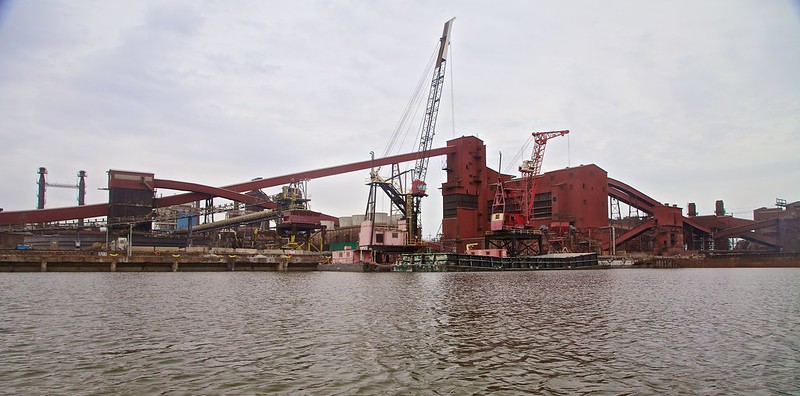
Beginning with a brickyard, the first buildings of the Sparrows Point Steel Mill were constructed in 1887. Financed by the Pennsylvania Steel Company, in partnership with the Bethlehem Iron Company (later becoming Bethlehem Steel), the location for the mill was chosen due to its proximity to a deepwater port, since the essential ingredient of iron ore was originally brought by steamships from Cuba. In the ensuing decades, railroads were laid, wharfs and piers were built and the first Sparrows Point Company Store opened. In the early 1890s, the first blast furnace was constructed, allowing for steel to be produced on site. In these early years, houses for the workers were built and the company town of Sparrows Point blossomed. Up until the 1970s, the Sparrows Point town included its own police force, fire department, schools, churches, a bowling alley and cinema, among many other amenities. Based on the memories of those who have lived there, it is understood that the lifestyles of both workers and their families – from annual community parades, company football and baseball games to strikes, hardships and life-threatening conditions – were profoundly shaped by the mill, a phenomenon that spread even further over the course of the 20th century into the surrounding areas of Dundalk, Edgemere and the historically African-American neighborhood of Turner Station, to name a few.
The development of the Pennsylvania and Baltimore and Ohio (B&O) railroad lines at the turn of the 20th century not only helped to transport resources and products in and out of “the Point”, but helped to bring in workers from numerous neighborhoods in Baltimore city, the surrounding county, as well as from all over Maryland, Pennsylvania, West Virginia, Virginia, and North and South Carolina, and as far away as Trinidad and Tobago. During the 1950s, Sparrows Point was the largest steel-producing plant in the world, having built ships used in the World Wars, and parts of the Empire State Building, the Golden Gate Bridge, and the Chesapeake Bay Bridge. At its height, the mill employed roughly 31,000 steelworkers and associated personnel. Indeed, a significant portion of the workforce were ‘born into’ life at the mill – that is, it is a place where one’s grandparents, parents and children found employment up until today.
Sparrows Point Steel Mill became a complex constellation of factories, docks, cold and hot mills and numerous blast furnaces that covered several thousand acres. As such, it can be viewed as a significant component of the occupational and industrial story of Baltimore, the mid-Atlantic region and far beyond. In 2001, Bethlehem Steel went bankrupt and, in 2003, it was purchased by The International Steel Group (ISG). Between then and 2012, the mill underwent several changes of ownership, and consequently the workforce diminished to roughly 2000 personnel at its end. While parts of the mill are currently being sold, dismantled and shipped to other industrial plants, and the surrounding region is economically suffering, the significance, values, memories and stories of Sparrows Point still live on. Over the course of its 125 year-old history, hundreds of thousands of people have known Sparrows Point not only as a place of employment and economic stimulus for surrounding areas, but as a way of life, as a ‘home’ and a place that has shaped memories and stories that still endure today.